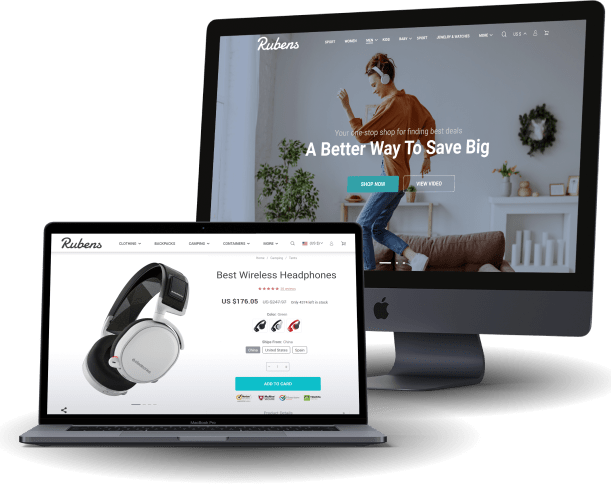Expert News For Choosing Sellvia Wordpress Dropshipping Services
Wiki Article
How To Assess Product Sourcing Suppliers, Dropshipping And Supplier Integration Services For Us Markets Using Shopify, Wordpress And Amazon Sellers
It is important to examine each of the platforms in terms of the reliability of the suppliers, the speed of integration and suitability for U.S. customers. This is a summary of the options to look at in Amazon Sellers, Shopify or WordPress for your dropshipping requirements.
1. Amazon Seller
Fulfilled by Amazon in contrast to. Merchant Fulfilled. Amazon’s FBA option provides warehousing and speedier shipping to meet customers' expectations. FBA differs from dropshipping because it demands you to buy your inventory up front.
Amazon's Dropshipping Policy: Amazon's guidelines for dropshipping requires you to declare yourself to be the seller of record. Third-party suppliers must offer reliable quality and shipping services to avoid account termination because of order issues or feedback that is negative. Make sure the supplier you select is in compliance with Amazon's strict shipping and packaging guidelines.
Limits on Supplier Flexibility: With Amazon, there are fewer integrations with dropshipping companies from outside like those available on Shopify or WordPress. If you're dropshipping on Amazon you'll have to find and collaborate with Amazon-compatible providers that meet strict delivery requirements or choose private label FBA options for faster delivery.
Assessment Steps for Amazon Sellers:
Examine Supplier Reliability: Determine whether the company is able to keep Amazon's promise of speedy delivery (often within 2-3 days for Prime customers).
Policy Compliance: Ensure that the seller is in compliance with Amazon's specifications for packaging and labeling, and that they are able to process returns as well as refunds according to Amazon's policies.
Communication with suppliers is essential. You will need to be able to react quickly to any problems. To prevent disruptions If you're using FBA choose suppliers that have consistent quality and stocks.
2. Shopify
Shopify offers a wide range of integration tools that work with dropshipping companies, such as Oberlo. Spocket. DSers. Modalyst. Certain apps offer options to U.S. vendors to reduce the time of delivery.
U.S. Access to Suppliers Based in the United States : Tools like Printful and Spocket are specialized in sourcing items from U.S. vendors or suppliers that have U.S. storage facilities, which reduces shipping times significantly for U.S. customers.
Automated Syncing: Shopify's apps automatically update product descriptions inventory, prices, and inventory from suppliers, decreasing the chance of selling out-of-stock products or pricing mistakes. Automated order fulfillment tools make it easier to handle manual work and ensure that orders are up to date.
Product Variety and Niche Choice: Determine if integrations allow users to have access to a range of products that align with your particular niche. This can be beneficial to the customer's satisfaction and consistency of brand.
Assessment Steps for Storeify
U.S.-Based Supplier Availability: Review which suppliers are based in the United States. They have U.S. warehouses or offer quick shipping options to the U.S. market. For U.S. sources, Spocket/Printful is the ideal solution.
Read reviews about the product. If possible, sample the product. Reliability of the supplier can be variable, and customer feedback on the quality of products is crucial for ensuring that customers have positive experiences.
Supplier responsiveness and customer support Examine the response times of the suppliers. This is crucial in the event of issues. Suppliers who provide prompt customer service will increase customer satisfaction and help resolve problems faster.
3. WordPress (WooCommerce).
Flexible Sourcing via plugins: WooCommerce on WordPress allows considerable flexibility in the sourcing process, with plugins like AliDropship, Spocket, and WooDropship which allow you to sync the products of suppliers directly into your store.
U.S.-Based Supplier Options: Like Shopify, WooCommerce integrates with U.S.-based suppliers via Spocket, Printful, and other providers, making it ideal for fast delivery in the U.S. market.
Product Customization and Private Label Options: WooCommerce may also integrate with private label and custom print providers like Printful, which allows for product branding and customization--helpful for establishing a unique brand identity.
Manual Fulfillment Option - Although WooCommerce allows automated fulfillment through several plugins, this one allows you to have more control of order processes. This makes it much easier for you to troubleshoot and alter orders, in the event that you need to. This is a loss, as it's more complicated to setup and manage than Shopify.
Assessment Methods for WooCommerce:
Compatibility: Make sure that the plugins are compatible with WooCommerce. Check for automatic sync of prices, products and stock.
Quality Control for Suppliers Examine the reliability and reputations of suppliers from the US. Suppliers who have a great reputation in customer service should be taken into consideration. Also, look out for consistency in product quality and availability.
WooCommerce allows flexibility when it comes to pricing, which is beneficial in the event that your markups on products have to be adjusted frequently due circumstances in the market or prices of suppliers. Check out the best Sellvia review for blog examples including starting an online company, items that are trending, ecommerce company, software e commerce, make a online shop, ecommerce business for sale, ecommerce dropshipping, sell online website, drop shipping how to, software e commerce and more.

How To Determine The Fees For Platforms And Cost Structure
To fully comprehend the financial viability of dropshipping business in the US, it's important to analyze platform costs and fees for Amazon Seller, Shopify and WordPress. This article will help you evaluate the costs and charges across all three platforms.
1. Amazon Seller
Platform Fees
Subscription Costs:
Individual Plan: No monthly fees and $0.99 per piece of merchandise sold. This plan is suitable for sellers selling in small quantity.
Professional Plan $39.99/month that includes access to Amazon's advertising tools and options, including Brand Registry.
Referral Fees: Amazon offers a referral fee according to the product's category, typically ranging from 8% to 15% of the sales price. For example, electronic items might charge an 8% fee while apparel is charged 17 percentage. The fee structure can affect pricing strategies of dropshippers.
Amazon charges a fee for the collection, packing and shipping orders. FBA costs differ based on the weight and size of the item as well as storage fees. FBA makes fulfillment easier, but it costs.
Additional Costs
FBA's storage fees are based on volume and rise during peak season. Dropshippers must manage storage costs is essential in order to keep profits.
Advertising and Promotions: Sponsored Brands and Amazon's Pay-Per-Click (PPC) campaigns as well as sponsored products ads and Sponsored Brands are added costs. Costs for advertising may vary greatly depending on factors like competition, the target keywords and advertising goals.
Miscellaneous charges: These include charges for returns charges on account balances, chargebacks to accounts and additional Amazon services like gift wrapping and premium shipping.
Amazon Sellers" Assessment:
Calculate your Total Cost of Subscription and Referral. Utilize Amazon's Fee Calculator to estimate the total cost per sale.
FBA compatibility: Evaluate whether FBA fees are compatible with your dropshipping strategy, especially when the product is light in weight or have a high profit margin.
Ad Spend Requirements - Determine your budget for PPC advertising to see if Amazon will bring in enough visitors and converts within your budget.
2. Shopify
Platform Fees
Monthly Subscription Charges
Basic Plan: $39 per month, including essential e-commerce tools.
Shopify Plan - $105 per month. It includes advanced reports, reduced transaction costs, and much more.
Advanced Plan: $399 per month. Provides more detailed reporting options, advanced shipping, and lowest transaction costs.
Shopify Plus : The enterprise level pricing begins at $2,000 per month, providing scalability to high-volume dropshipping companies.
Shopify charges 2,9% + $0.30 a transaction for online payments using credit cards under the Basic Plan. Higher plans offer lower costs. Shopify provides 2% to the Basic plan and 1percent to the Shopify Plan, or 0.5 percent to Advanced when you use Shopify Payments, as opposed to a payment processor.
Additional Costs:
Payment Gateway Fees The use of gateways such as copyright, Stripe, or other third-party services incurs additional transaction costs that differ by provider, impacting the profit margins.
App and plugin costs Dropshipping software such Oberlo, Spocket (or custom apps for marketing and customer support) or analytics and analytics as well as custom applications have monthly fees. The cost of these popular applications ranges from $10 to over $100 per month. This adds to the operational expenses.
Advertising Costs. Shopify stores often depend on advertising from outside sources like Google Ads or Facebook Ads. The costs can vary considerably depending on the objectives of the campaign as well as the audience and platform algorithm.
Shopify does not charge for themes or design. Premium themes are offered for purchase at the cost of $100 to $350 in advance. The price for custom themes may be higher when your store is heavily custom.
Steps to Assess Shopify
Estimate the cost of subscriptions and transaction fees Consider which Shopify plan will best suit your sales volume and profit margin. Calculate the expected transaction costs using your average sales volume.
Be aware of the cost of apps. Examine your requirements in terms of marketing and dropshipping. Only use essential applications for managing monthly fees.
Budget for advertising Plan your advertising budget based on the audience you are targeting. Shopify dropshipping relies heavily on paid advertising to acquire customers.
3. WordPress (WooCommerce).
Platform Fees
WordPress hosting requirements differ for each provider. Basic hosting can cost between $10 and $25 per month. Managed WordPress hosting costs anywhere from $30 and $200+ a monthly.
WooCommerce Plugin WooCommerce by itself is free. However, premium plugins with additional functionality can incur recurring charges.
Domain registration and SSL cost: $10 to $15 for a year-long domain registration, and $50-$100 for SSL certificates in the event that hosting isn't included (many hosting providers offer SSL at no cost).
Additional Costs
Payment gateway fees: Payment processors including Stripe and copyright typically charge between 2.9% to $0.30 per transaction. WooCommerce accepts multiple payment gateways, so fees may vary depending on the chosen provider.
Premium Extensions and Plugins WooCommerce's basic functionality is basic; most dropshippers will require additional plugins for dropshipping, such as AliDropship, Spocket, or a custom order management tool. These plugins typically cost $10 to $50 a month. Other premium extensions are available at a single or annual fee.
The costs for theme customizations and themes can vary from $50 to $100+ for themes that are premium. If you're looking for a distinctive appearance for your store customized themes and advanced development can cost a lot.
Security and Maintenance Costs - Contrary to Shopify users WooCommerce is accountable for all site maintenance including security updates, updates, (e.g. Firewall plugins) and possible backup options. These costs range from $10-$50 per month.
Assessment Methods for WooCommerce:
Calculate the costs of your hosting and plug-ins. Choose a hosting service that matches your expected sales and traffic volumes. Consider the cost of the essential plugins.
Compare the gateway options available to lower transaction costs. Consider which providers are favored and trusted by U.S. customers.
Budget for maintenance on your site: Consider costs such as security, backups and ongoing website maintenance. If you want to update your site and do troubleshooting, determine if a developer is needed. Read the most popular Sellvia review for more recommendations including items that are trending, best items to sell online, dropshipping products, winning products, online store platform, ecommerce services, winning products, e commerce, winning products, make an online store and more.
